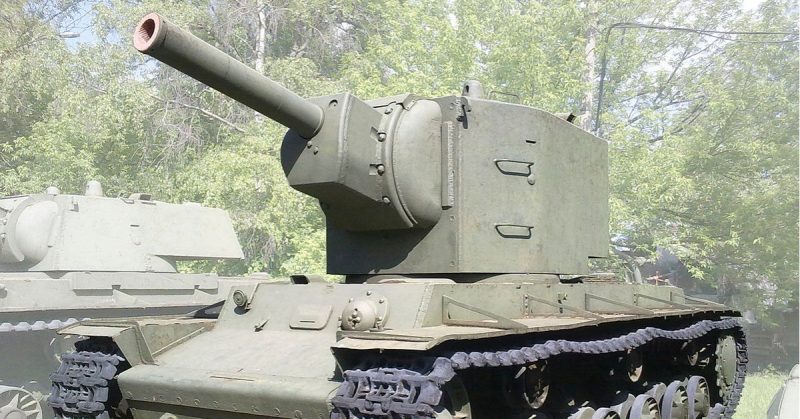At the outbreak of WWII, the German Armored Divisions seemed invincible. Using their “Blitzkrieg” tactics which relied heavily on fast, maneuverable armored divisions they were able to punch through or circumvent enemy defenses quickly.
During Operation Barbarossa in 1941, the Germans again seemed to be unstoppable, but the Soviets did possess one item in their armored arsenal that proved to be a thorn in the side for many German commands, at least at the tactical level – The Soviet KV Heavy Tank. It was quickly dubbed the “Russian Colossus”.
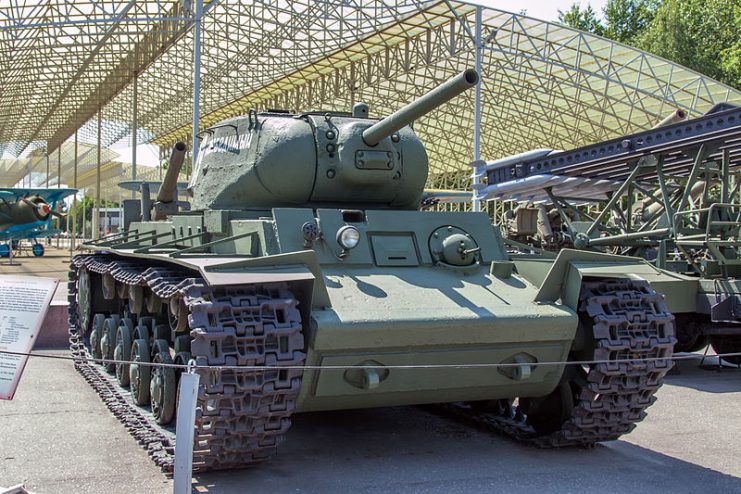
Named after the Soviet Defense Minister, Kliment Voroshilov, the KV was much different than it’s German adversaries in that it was enormously heavy (45 tons) with extremely thick frontal armor (90mm) as well as good side and rear protection (70mm armor).
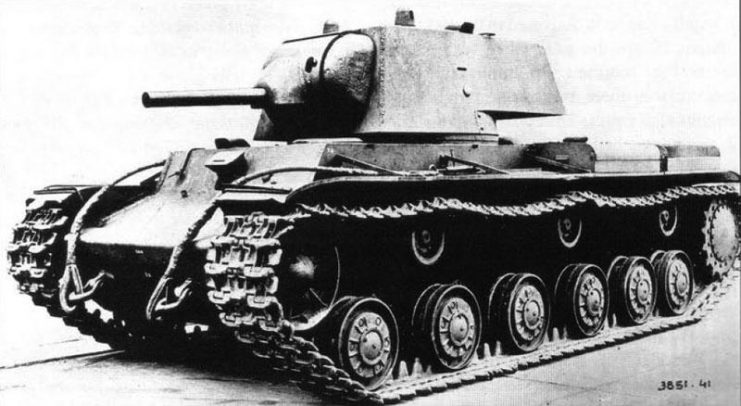
Nothing in the German arsenal could penetrate it except for the German 88’s. The 37mm and 50mm cannons of the Panzer III and Panzer IV simply “bounced” and only carefully placed explosives or point blank ranged artillery had any chances of success in immobilizing the behemoths.
The KV’s carried a crew of 5 and sported various armaments in it’s many different models ranging from a 76.2 mm gun in early models to even a 152mm howitzer in the KV-2.
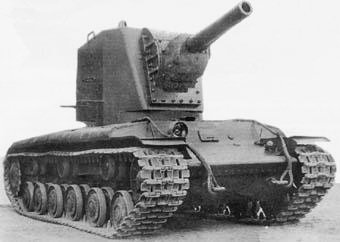
Additionally, it carried 3 machine guns initially: one coaxial gun in the turret, one ball mount in the rear turret and one ball mount in the front of the hull. An additional AA gun was mounted on the turret in later models.
Additionally, despite its weight, the KV torsion bar suspension and wide tracks allowed it to maneuver in mud and soft earth. It’s tracks and wheel system were remarkably durable and suited to its classification as a heavy tank.
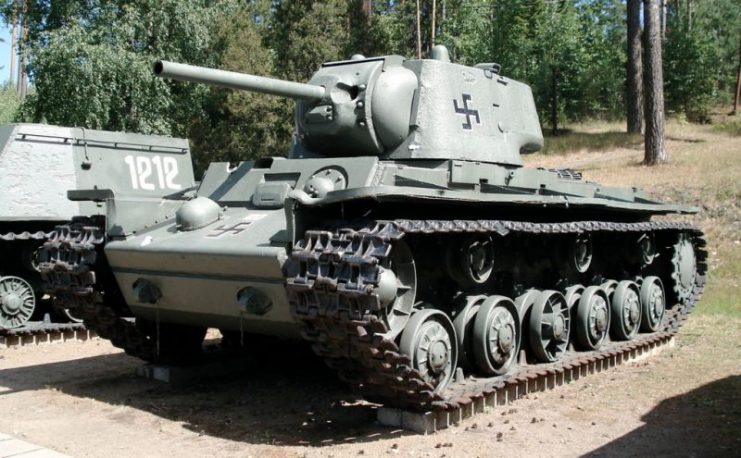
Unfortunately for the Soviets, the KV’s had a plethora of drawbacks as a combat tank. For one, it’s engine and transmission couldn’t handle the weight and the tank was not only extremely slow, but it was hard to maneuver. It could easily be outflanked by both infantry and its armored German adversaries. However, it was tank that sometimes just wouldn’t die.
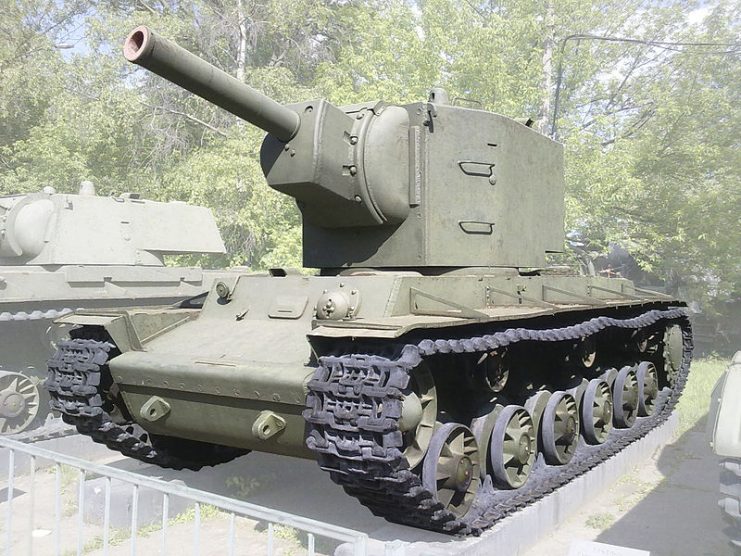
A battle involving a lone KV-1 in Raseiniai is possibly the best example. One KV and it’s crew were able to halt the advance of the entire German 6th Panzer Division for a day until the beleaguered tank ran out of ammunition an fuel and the crew was eventually killed.
Other stories from German soldiers speak of the countless rounds of armor piercing shells proving ineffective at stopping the KV and some noted that when out of ammunition, many of the Soviet tank crews would simply run over Anti-Tank batteries.
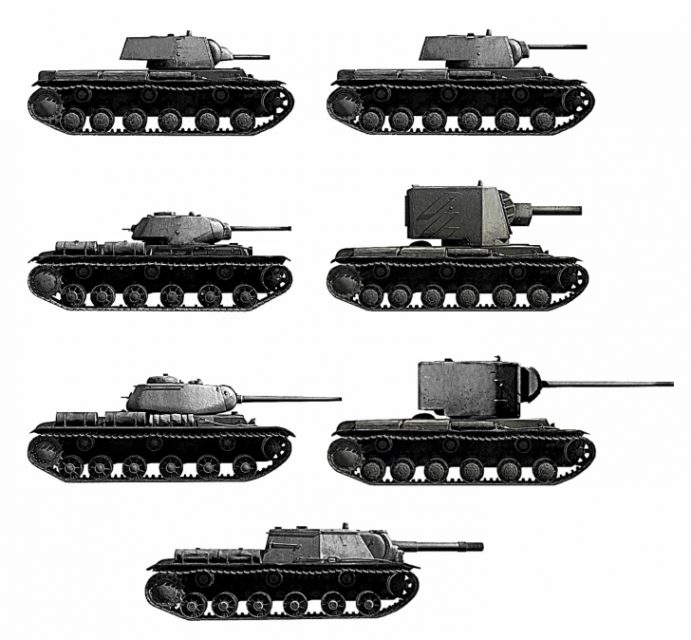
However, the flaws of the KV included more than it’s slow moving bulk. It was extremely expensive to build and the much cheaper T-34 with the same offensive firepower could be produced at more than half the cost. Additionally, as the war went on, Germany began to field armor and guns with more firepower, which reduced the KV’s appeal even more as its thick armor became obsolete.
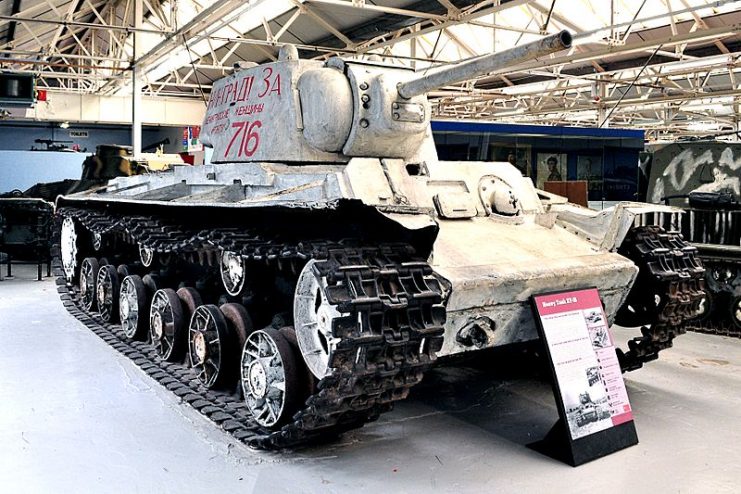
Although the KV’s remained in the Soviet Army throughout the entire war, there production dwindled and by 1944 they had been replaced with newer, more versatile heavy tanks such as the IS series. These colossal beasts had seen their day come and go and were now obsolete.
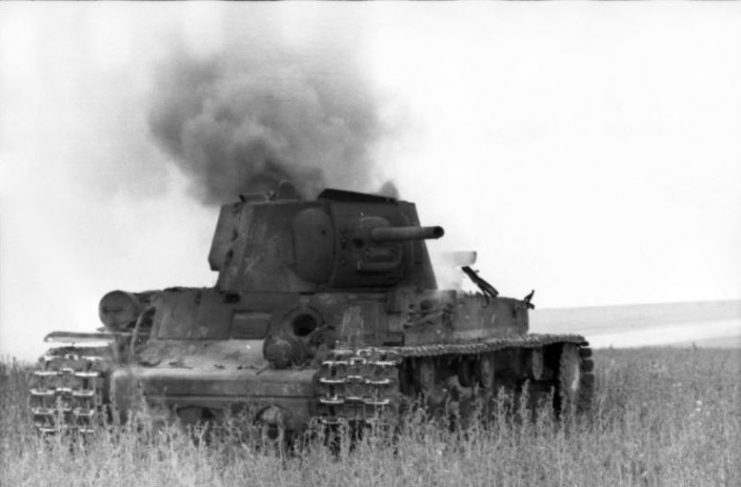
Still, the KV remains a symbol of the tough, never give up mentality of the Soviet Army during World War II.
